- Carmoola
- Blog
- Car Maintenance
- A Guide to Car Dashboard Symbols
- 🗞 Car Maintenance
- Last updated: Mar 2, 2023
- 11 Min Read
A Guide to Car Dashboard Symbols
Written by

Verified by


See how much you can borrow in 60 seconds
| Representative Example | |
|---|---|
| Loan amount | £10,000 |
| Interest rate | 13.9% APR |
| 54 payments of | £246 |
| Total cost of credit | £3,284 |
| Option to purchase fee | £1 |
| Total payable | £13,285 |
Modern cars are technological marvels, filled with sophisticated electronics and sensors that monitor every aspect of your vehicle's performance.
While this technology has undoubtedly made cars safer and more reliable, it also means that there are more dashboard lights and messages than ever before to keep track of.
Do you ever get confused by all the car dashboard symbols and their meanings? 🤔
Basics of Dashboard Symbols
Understanding what each of these car dashboard lights means is essential for maintaining your car's health and preventing breakdowns.
From yellow lights indicating minor issues to red lights signalling more serious problems, each car dashboard light provides valuable information about your car's condition.
Whether you're a seasoned car owner or a new driver, taking the time to learn about your car's dashboard warning lights can save you time, money, and headaches down the road.
It can also help to improve your driving experience.
Check Engine Light
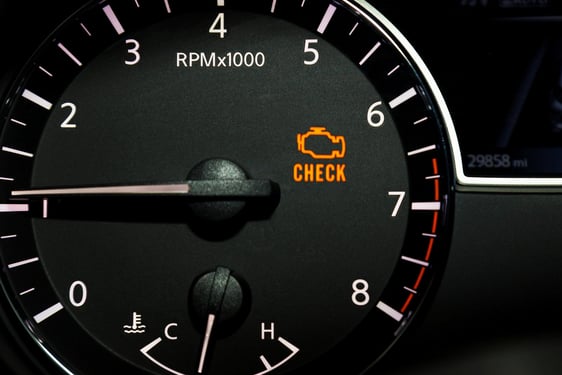
The engine management light, also known as the check engine or ECU warning light, can be a worrying sight. When this light comes on, it often means that your engine is not running properly.
You may notice a lack of power or stuttering as you press the accelerator. While it may sound serious, it might not necessarily be as bad as you think.
The engine management dashboard light can be triggered by a wide range of issues. These include everything from minor electrical sensor problems to major mechanical faults.
While it could be something minor, ignoring this car warning light and continuing to drive is a bad idea. It could cause further damage to your engine and potentially lead to costly repairs down the road.
Your car's engine is its heart and soul, so don't take any chances when it comes to its health. If you see the engine management light come on, act fast and get it checked out by a professional.
Brake Warning Light
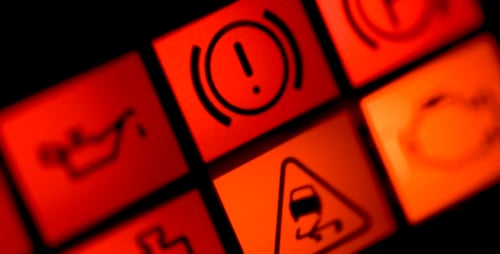
The brake system warning light, also known as the parking brake or brake fluid warning light, is one of the most important lights to watch out for.
If this red light remains on after you release the parking brake or comes on while you're driving, it could be a sign that your brake fluid levels are low.
Low brake fluid levels can be caused by a leak in the brake system, worn brake pads, or a malfunctioning master cylinder.
If you're not comfortable checking your brake fluid levels yourself, it's best to take your car to a professional for inspection and repair.
Power Steering Warning Light
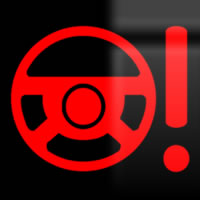
The EPS (Electric Power Steering) or EPAS (Electric Power-Assisted Steering) dashboard warning light is a sign that there's a problem with your car's power steering system.
In some cases, the problem could be as simple as a glitch in the system that can be fixed by turning the car off and back on again.
However, if the warning light remains on after rebooting, it's important to get your car checked by a professional as soon as possible.
Issues with the power steering can make it harder to control your car and increase the risk of accidents.
Depending on the nature of the problem, your power steering system may require a minor repair or a complete replacement, so it's best to leave it to the experts to diagnose and fix.
In cases like these, having breakdown cover can be a huge relief. Check out our complete guide to breakdown recovery cover to learn more.
Oil Pressure Warning Light
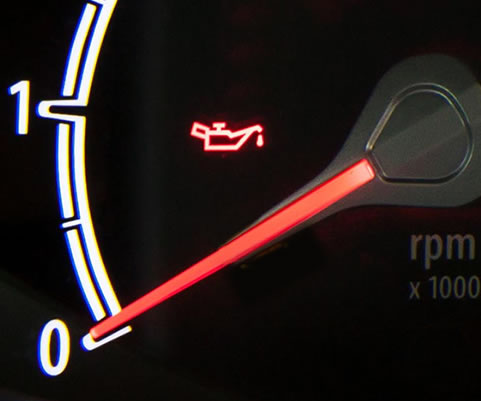
The oil warning light comes on when either the oil temperature gets too high, or the oil level or pressure is too low.
If this light comes on, it's a sign that your engine's lubrication system may not be working effectively, which can lead to engine damage or failure if left unchecked.
Low oil pressure or levels can be caused by a variety of issues, including leaks in the system, a malfunctioning oil pump, or normal wear and tear.
Do check your oil levels when you car is cold and top up if necessary with oil recommended by your manufacturer.
Find out more about useful regular car maintenance tips here and some of the best car maintenance YouTubers to help you.
Coolant Levels Warning Light
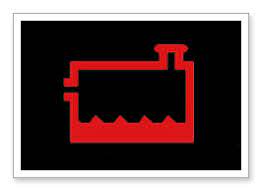
The coolant system in your car is designed to absorb heat from the engine and disperse it through the radiator to prevent the engine from overheating.
The coolant dashboard warning light comes on when your coolant levels are running low. Coolant levels can drop for a variety of reasons, including leaks in the system or normal wear and tear.
If the coolant dashboard light comes on, it's important to check your coolant levels and top them up as soon as possible.
Be sure to use the recommended coolant type and follow the manufacturer's guidelines for adding coolant to your car.
Engine Temperature Warning Light
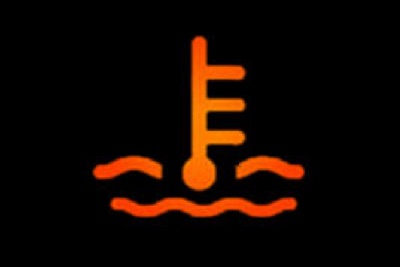
The engine temperature warning light is there to indicate a problem with your engine overheating.
It can be triggered by a variety of issues, including low coolant levels due to leaks in the system, or a problem with the coolant pump or thermostat.
In more serious cases, the engine temperature dashboard warning light can indicate a larger problem, such as a blown head gasket or a damaged radiator.
If you see the coolant temperature warning light come on, it's important to pull over to a safe location as soon as possible and turn off the engine.
Continuing to drive with an overheating engine can cause irreparable damage and increase the risk of a breakdown or engine failure.
Battery Warning Light
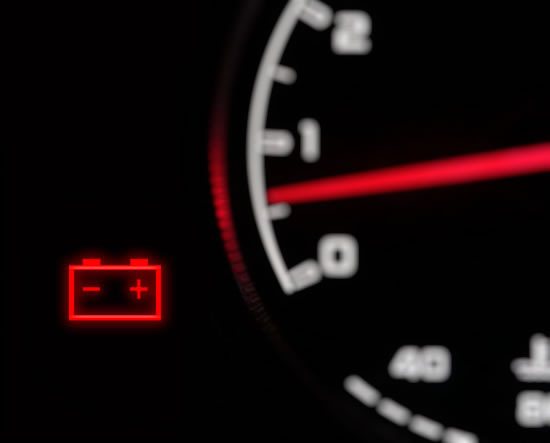
The battery warning light, also known as the battery charge light or battery charging system light, indicates that your car's battery is not charging properly.
This can be caused by a faulty alternator, a bad electrical connection, damaged cabling, or a failing battery.
A failing battery or charging system can cause your car to stall or leave you stranded on the side of the road. So, you’ll want to pull over quickly and call out the professionals.
Low Tyre Pressure Warning Light
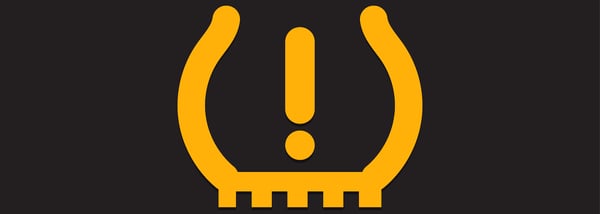
If you’re lucky enough to own a Mercedes Benz, it will likely come equipped with a tyre pressure monitoring system (TPMS).
This can help you stay on top of your tyre pressure levels and prevent potential issues on the road.
The TPMS is designed to alert you when your tyre pressure falls below a certain level, which can be caused by a puncture or gradual air loss over time.
The TPMS will typically display a warning light on your dashboard, indicating which tyre or tyres are affected and how much pressure has been lost.
Sometimes, as with a newer BMW, you will get a message which will also tell you if it's safe to continue driving!
ABS Warning Light
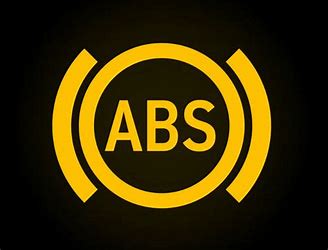
The ABS, or anti-lock braking system, is an important safety feature. It can help prevent your wheels from locking up and skidding during sudden stops, or in difficult driving conditions such as icy or wet roads.
When this warning light comes on, it typically indicates a problem with the ABS system, which can affect your car's braking performance and compromise your safety on the road.
If this light does come on, it may still be safe to drive. The system and your car's brakes will revert to their normal, unassisted state.
However, it's still important to take extra care and maintain a safe distance from other vehicles to avoid potential collisions.
Engine Stability Problem (ESP) Light
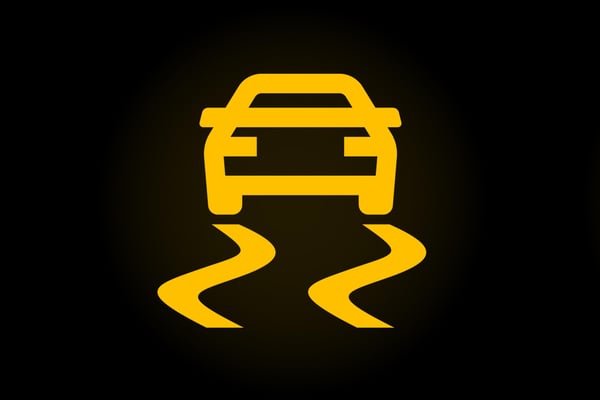
The ESP, or Electronic Stability Program, is a vital safety feature that helps prevent skidding and loss of control while driving on slippery or uneven surfaces.
If the ESP warning light comes on, it could indicate a problem with the system that requires immediate attention.
If the ESP warning light is flashing, it means that the system is currently intervening to help maintain traction and stability on the road.
However, if it stays on continuously, it suggests that the system is not functioning properly and may be compromised in the event of an emergency.
In some cases, the ESP system may be deactivated manually, which can cause the warning light to come on with the word "OFF" displayed.
If you suspect that the system may have been deactivated accidentally, try stopping and restarting the engine to see if the warning light goes off.
If the light remains on, it's best to have your car inspected by a professional to ensure that your ESP system is functioning properly and providing maximum safety on the road.
Airbag Warning Light
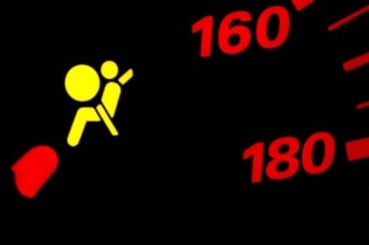
The supplemental restraint system (SRS) warning light, also known as the airbag warning light, relates to your car’s airbag system.
When this light turns red, it means that one or more elements of the airbag safety system are not functioning correctly.
It could be an issue with the airbag system itself, the front passenger occupant classification system (which detects the weight and position of the front passenger to deploy the airbag safely).
Or it may be the seat belt pretensioner system (which tightens the seat belt in the event of a collision).
Brake Pad Warning Light
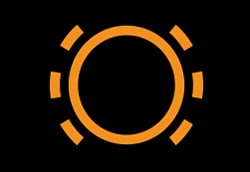
The brake pad dashboard warning light alerts you when your brake pads are becoming too thin and may need to be replaced. If you see this warning dashboard light appear, don’t panic!
While it's generally safe to continue driving with the brake pad warning light on, it's important to keep in mind that worn brake pads can compromise your ability to stop quickly and safely.
The warning light is designed to come on before the brake pads become dangerously thin, giving you time to schedule an appointment with a mechanic and get them replaced before they wear out completely.
DPF Warning Light
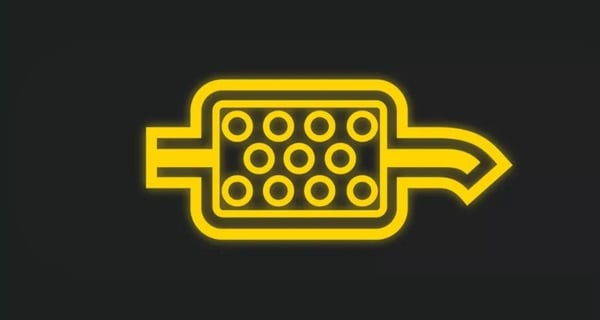
The DPF (Diesel Particulate Filter), or exhaust particulate filter warning light, is specific to diesel cars.
When this light comes on, it could mean there's a problem with the exhaust particulate filter, which is designed to reduce emissions and remove harmful soot from the exhaust gases.
It could be that the filter has become blocked with soot, which can happen over time as the filter accumulates particulate matter.
This can cause several issues, including reduced engine power, increased fuel consumption, and even engine damage if left unchecked.
To resolve the issue, you may need to have the filter cleaned or replaced, depending on the severity of the blockage.
In some cases, a regeneration process may also be necessary to burn off the accumulated soot and restore the filter's functionality.
Takeaway
Now that you know more about car dashboard symbols and what they mean, you should be able to identify any issues quickly, no matter what car you purchase.
Maybe it's time for an upgrade with more onboard help. If so, why not check out more about car finance and how it could help you buy something a bit newer!
Ready to drive your dream car? Start your car finance application with Carmoola. The process is fast, easy and straightforward, and you can get your budget in a few minutes.
Why not check out how it all works?Feel free to contact us with any questions. We're here to help! 😀
See how much you can borrow in 60 seconds
| Representative Example | |
|---|---|
| Loan amount | £10,000 |
| Interest rate | 13.9% APR |
| 54 payments of | £246 |
| Total cost of credit | £3,284 |
| Option to purchase fee | £1 |
| Total payable | £13,285 |
Related articles
What Are the Top 5 Used Car Websites in the UK?
Thanks to the internet, searching for a used car in the UK is easier than ever before. You can simply head online, visit a used...
What Is GMFV in PCP Car Finance? Guaranteed Minimum Future Value Explained
GMFV, or Guaranteed Minimum Future Value, is the amount your lender estimates your car will be worth at the end of your PCP...
Does Financing a Car Build Your Credit?
Financing a car can build credit when you make payments on time, but it can damage your score if you miss payments or take on...

.webp?width=832&height=592&name=customer-support%20(1).webp)










.webp?width=400&height=285&name=online-shoppers-with-dog%20(1).webp)


.jpg?width=500&height=356&name=Vintage%20car%20going%20to%20an%20old%20town-1%20(1).jpg)





